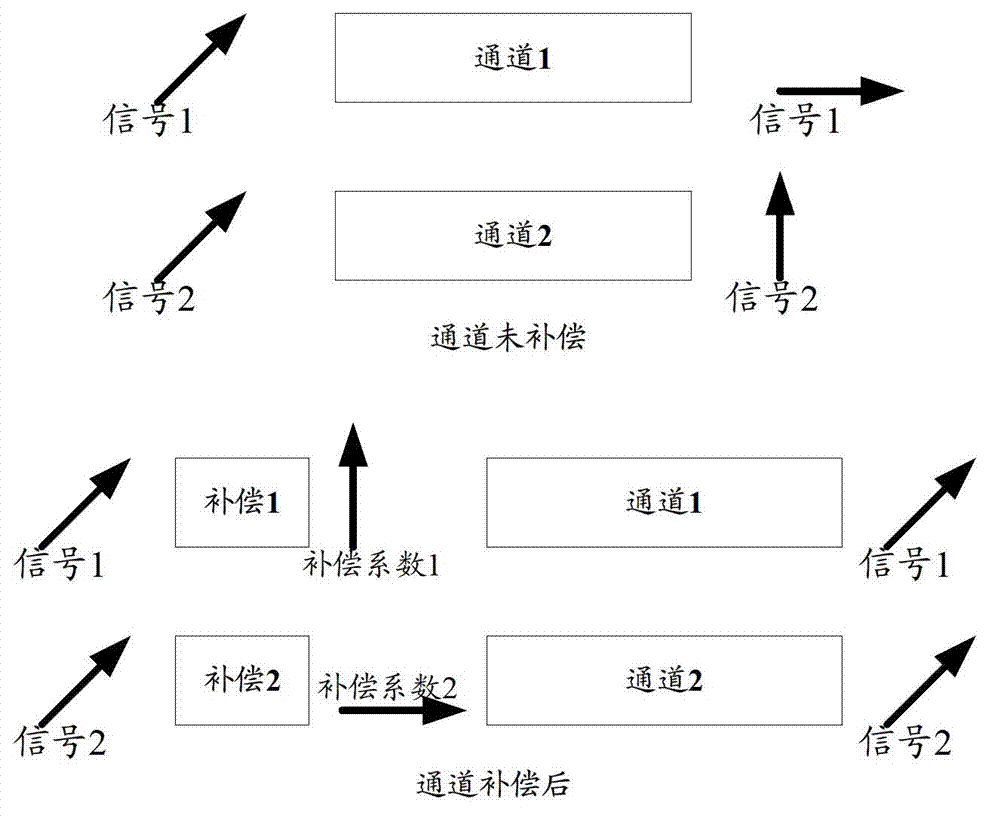Antenna calibration method and base band unit
A technology for antenna calibration and channel calibration, applied in baseband system components, diversity/multi-antenna systems, space transmit diversity and other directions, it can solve the problem of high peak average, the signal no longer has the low peak-to-average ratio characteristic of ZC sequence, and unpredictable, etc. question
- Summary
- Abstract
- Description
- Claims
- Application Information
AI Technical Summary
Problems solved by technology
Method used
Image
Examples
Embodiment 1
[0048] The specific process is as Figure 5A Shown:
[0049] Step 1: The BBU generates the calibration signal txCalSeq to be sent.
[0050] Step 2: Determine whether this calibration process is the first calibration process, if so, go to step 3, otherwise, go to step 4;
[0051] Step 3: Perform channel difference compensation on the calibration signal according to the phase compensation coefficient, that is, multiply the calibration signal by the phase compensation coefficient: txCalSeq_equalize=txCalSeq.PhaseCoeff, the phase compensation coefficient PhaseCoeff=1 or PhaseCoeff is the phase compensation coefficient obtained in the previous calibration cycle , and go to step 5;
[0052] Step 4: Perform channel difference compensation on the calibration signal according to the phase compensation coefficient, that is, multiply the calibration signal by the phase compensation coefficient, which is the phase compensation coefficient obtained in the previous calibration process;
...
Embodiment 2
[0075] For an 8-channel, 20MHz bandwidth TD-LTE system, such as Figure 5B As shown, the example of the scheme is as follows:
[0076] Step 1: Generate ZC sequence according to system bandwidth. When the system bandwidth is 20MHz, the ZC sequence selects 1200 points. Then distribute 1200 points of ZC to 8 sending channels, the specific implementation is as follows:
[0077] L=1200; %1200 point sequence length
[0078] N_ZC=max(primes(L));% Find the largest prime number
[0079] m_zc=1193;%sequence index
[0080] Xk _ ZC = exp ( - li * p * m _ zc * ( 0 : ( L - 1 ...
PUM
 Login to View More
Login to View More Abstract
Description
Claims
Application Information
 Login to View More
Login to View More - R&D
- Intellectual Property
- Life Sciences
- Materials
- Tech Scout
- Unparalleled Data Quality
- Higher Quality Content
- 60% Fewer Hallucinations
Browse by: Latest US Patents, China's latest patents, Technical Efficacy Thesaurus, Application Domain, Technology Topic, Popular Technical Reports.
© 2025 PatSnap. All rights reserved.Legal|Privacy policy|Modern Slavery Act Transparency Statement|Sitemap|About US| Contact US: help@patsnap.com



